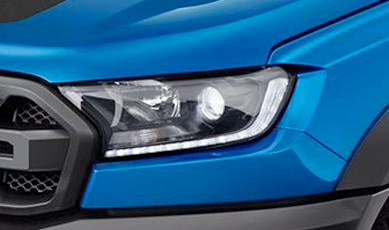

In the realm of automotive lighting, LED headlights have emerged as a popular choice for their efficiency, durability, and superior illumination. However, like any other automotive component, LED headlights require proper maintenance to ensure optimal performance and longevity. In this comprehensive guide, we will delve into the essential maintenance and care tips for LED headlights installed in Land Cruisers, covering cleaning procedures, troubleshooting common issues, and addressing moisture buildup.
Regular cleaning is paramount for preserving the clarity and effectiveness of LED headlights. Begin by gathering the necessary supplies, including a soft microfiber cloth, mild soap, water, and a bucket. Avoid using abrasive cleaners or rough materials that could scratch the surface of the headlights.
To begin the cleaning process, prepare the headlights by ensuring the vehicle is parked in a shaded area and the lights are cool to the touch. Remove any surface debris or dirt using a gentle stream of water or a damp cloth. Next, mix the mild soap with water in the bucket and dip the microfiber cloth into the solution.
With the soapy cloth, gently clean the surface of the LED headlights using circular motions, paying attention to areas with stubborn grime or insect residue. Rinse the headlights thoroughly with clean water to remove any soap residue, and then dry them using a separate clean microfiber cloth. Finally, polish the headlights with a specialized plastic polish to restore their shine and clarity.
It is recommended to clean LED headlights at least once a month or more frequently if driving conditions expose them to excessive dirt, dust, or environmental contaminants.
Despite their reliability, LED headlights may encounter common issues that require troubleshooting to rectify. Dimming or flickering lights are often indicative of electrical problems. Begin troubleshooting by checking the electrical connections to ensure they are secure and free from corrosion. Inspect the wiring harness for any signs of damage or loose connections that may disrupt the flow of electricity to the headlights. Additionally, test the LED bulbs themselves to determine if any are faulty and in need of replacement.
Uneven beam patterns can diminish the effectiveness of LED headlights and compromise visibility on the road. To address this issue, adjust the headlight alignment according to the manufacturer's specifications. Use a level surface and a measuring tape to ensure the headlights are properly aligned both horizontally and vertically. Inspect the headlights for any obstructions or damage that may be obstructing the light output, such as debris or misaligned lenses.
Intermittent operation of LED headlights can be frustrating and potentially hazardous while driving. Start by checking for corrosion or moisture in the electrical connectors, as these can disrupt the flow of electricity and cause intermittent functionality. Evaluate the health and voltage of the vehicle's battery, as a weak or depleted battery may struggle to provide consistent power to the headlights. Additionally, inspect the wiring harness for any signs of wear or damage that may be contributing to the issue.
Excessive heat generation from LED headlights can be a sign of underlying problems that require attention. Ensure the headlights are properly ventilated to dissipate heat effectively and prevent overheating. Check for any signs of overloading or high current draw that may be causing excessive heat buildup, such as incompatible aftermarket accessories or faulty wiring connections.
Moisture buildup inside LED headlights can compromise their performance and lead to electrical issues if left unchecked. Understanding the causes of moisture buildup is crucial for implementing effective prevention measures. Moisture can enter the headlight housing through damaged seals or gaskets, improperly installed bulbs, or cracks in the lens or housing.
Prevention measures are essential for mitigating moisture buildup in LED headlights. Ensure the headlight housing is properly sealed to prevent water intrusion, especially after performing maintenance or replacing bulbs. Consider using desiccant packs inside the headlight housing to absorb excess moisture and maintain a dry environment. Regularly inspect the headlights for any signs of cracks or damage that may compromise their integrity and allow moisture to penetrate.
In the event that moisture does accumulate inside the LED headlights, prompt removal is necessary to prevent damage to the electrical components. Natural evaporation methods can be effective for removing minor amounts of moisture over time, such as leaving the headlights in a warm, dry environment with the caps removed. Alternatively, utilizing heat sources such as a hairdryer or heat gun on a low setting can expedite the evaporation process. For stubborn moisture buildup or more severe cases, professional drying techniques may be required to ensure thorough removal and prevent future issues.
Proper maintenance and care are essential for prolonging the lifespan of LED headlights in Land Cruisers and ensuring optimal performance on the road. By adhering to regular cleaning procedures, troubleshooting common issues, and addressing moisture buildup promptly, owners can enjoy reliable and efficient illumination from their LED headlights for years to come. Implementing these maintenance tips not only enhances safety and visibility but also preserves the value and integrity of the vehicle's lighting system.
Email format error
Email cannot be empty
Email already exists
6-20 characters(letters plus numbers only)
The password is inconsistent
Email format error
Email cannot be empty
Email does not exist
6-20 characters(letters plus numbers only)
The password is inconsistent